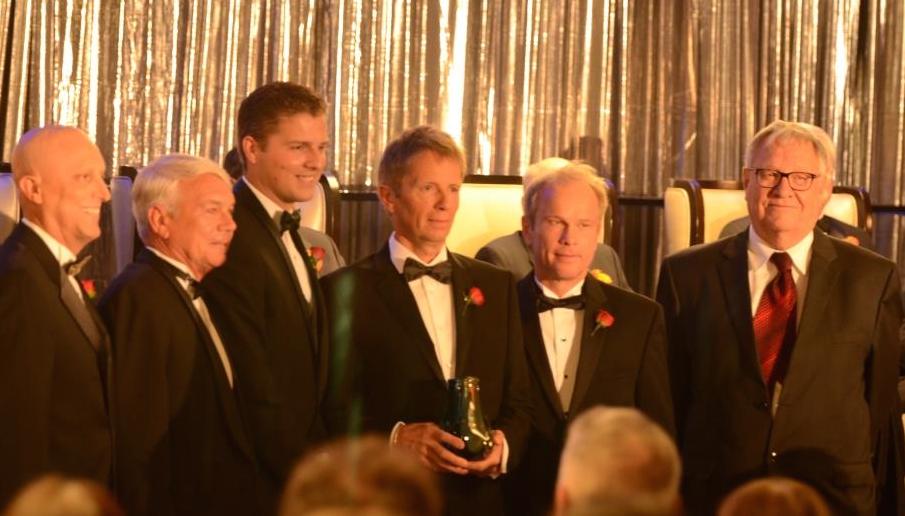Hall of Fame induction for former Forewind manager
Former Forewind survey manager Tor Inge Tjelta has been inducted into the Offshore Energy Center’s Hall of Fame in Houston for his work with suction pile technology spanning some 30 years, and now used within the offshore wind energy sector.
Along with this honour he, and others from Statoil, the Norwegian Geotechnical Institute and Shell, were presented with the Pioneering Technology Award for their contribution to the offshore industry, specifically the positive impact the suction pile technology has had globally. Forewind itself benefitted from the technology, as the organisation's two meteorological masts on Dogger Bank sit atop foundations installed using the suction technique.
“This is actually the third time being officially recognised for work on this technology, as we strive to continually improve it to reduce costs, adapt to new technical requirements and keep ahead of the competition,” Tor Inge said. “We have used both experience and evolution, via observing and measuring performance, to drive the improvements.”
The foundation technology is in effect an upended steel bucket placed on the seabed and installed using its own weight and suction achieved by pumping out water. It is recognised as faster, more cost-effective and quieter than many alternative options such as conventional piles or drag embedded anchors.
The technology was introduced in the 1970s into the oil and gas industry to solve issues with existing permanent mooring techniques used in the North Sea but it was put to rest in 1980 after a less than successful experience with its implementation.
In 1986, large scale offshore tests to determine the seabed soils for the North Sea’s Gulfaks C platform revived the concept of suction foundations and won Tor Inge and his colleagues their first award related to the technology – the Offshore Magazine Award for most outstanding contribution to marine technology - presented at the Offshore Technology Conference in Houston. The tests enabled the foundation concept of skirt piles, that is, long concrete skirts acting as piles, to be implemented for the first time with a gravity-based structure.
Since then, the suction pile foundation technology has only moved in one direction, upwards. After further design development, improvement, studies and research on offshore suction foundations by the Norwegian offshore industry in the early 1990s, hundreds were installed in the North Sea, offshore West Africa, off the Brazilian coast and in the Gulf of Mexico. In the late 1990s the concept expanded to deep-water mooring systems for drilling rigs and it is now also being used for the offshore wind industry.
In 2012, a second award for the technology was presented to Tor Inge and two others from Statoil and Kvaerner when they were inducted to the prestigious American Society of Civil Engineers Offshore Technology Conference Hall of Fame.
Tor Inge’s input included research and development from the mid-1980s and together with colleagues in Statoil, he has worked to introduce this solution as a safe, cost efficient and reliable foundation for moorings, sub sea templates, steel jackets, well head supports and other applications.
The two meteorological masts at Dogger Bank were placed on top of Universal Foundation Norway's Mono Bucket foundations, which were affixed to the seabed via the suction approach.
Tor Inge said the recognition was a great honour and that it was also rewarding to see the technology that he has worked on with others for so many years also being adapted for wider offshore sectors.


 About Forewind
About Forewind Dogger Bank
Dogger Bank Development
Development Projects
Projects News
News Events
Events Downloads
Downloads Contact
Contact